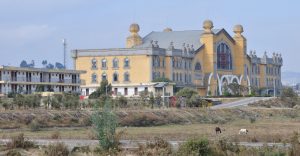The Addis Ababa-Djibouti Railway (AADR) has been in operation since 2018 – the year when we began our research project about Chinese-built railway infrastructure development in Ethiopia and across East Africa, and started to publish our findings also in The Diplomat. (See: China and Ethiopia, Part 1: The Light Railway System; China and Ethiopia, Part 2: The Addis Ababa–Djibouti Railway; Revisiting Chinese Transportation Projects in Ethiopia; China and Ethiopia: The Addis Light Train Stuck in Slow Motion.)
During our latest fieldwork at the end of January 2024, the first thing that struck us was the smoother and quicker access on road to Furi-Lebu central station, located in the outskirts of the Ethiopian capital. The expressway our driver called the “ring road,” together with newly built road sections, allows those using a car or bus to get to the station with fewer challenges than in the past years. With other means of transportation, however, the 15-kilometer distance from Meskel Square still needs proper planning.
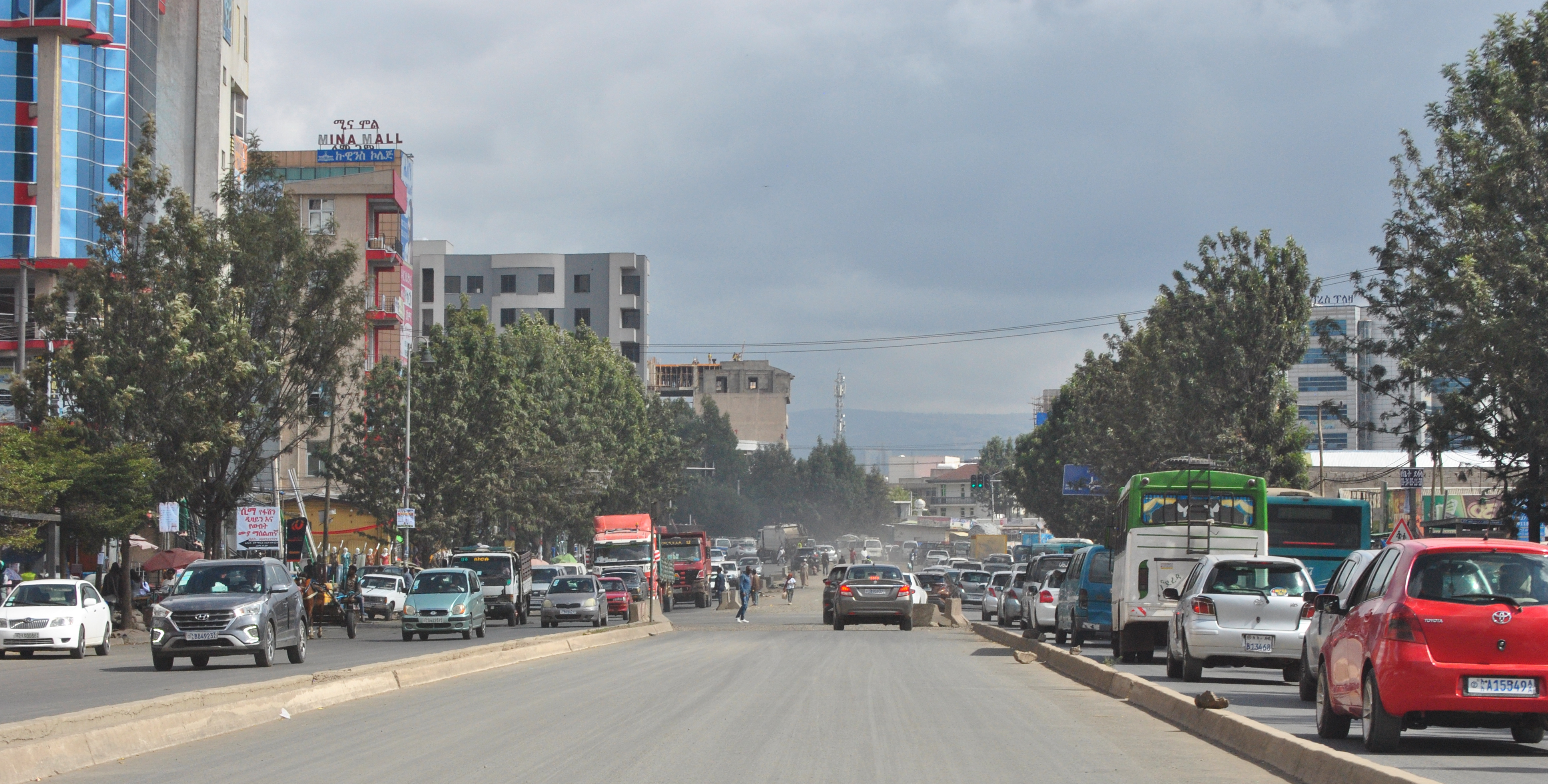
A road leading to the AADR’s starting point, Furi-Lebu central station. Photo by Istvan Tarrosy.
When arriving at the vicinity of the station building, it is evident that the entire neighborhood has been transforming into a new quarter. Compared to our last visit, there are more finished houses, local businesses, and many community activities – including soccer games on a Sunday along the road leading up to the stairs of the main gate.
The station can therefore be seen as a local pole of development with multiplying effects. CEO Abdi Zenebe, Ph.D., who has been in that position since March 2022, has even installed a mini soccer field and basketball court, serving both some community needs and the well-being of the company’s employees by offering time slots for outdoor sports.
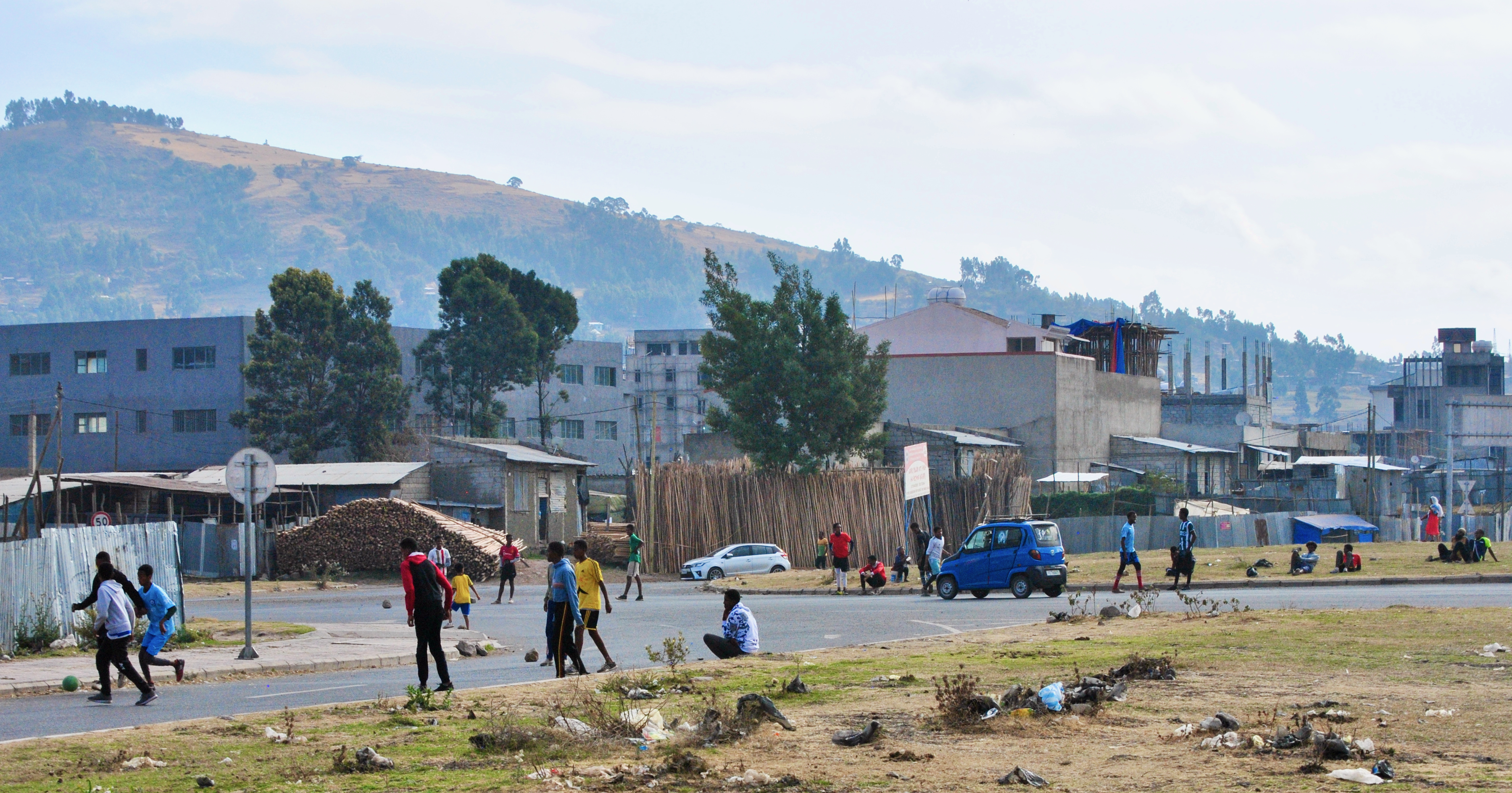
A new neighborhood, complete with houses, businesses, and community activities, has sprung up near Furi-Lebu central station. In this photo, locals play soccer on the road leading up to the main gate. Photo by Istvan Tarrosy.
Regarding the skills transfer and capacity building of the local Ethiopian workforce, the previous operators, the China Railway Group Limited and the China Civil Engineering Construction Corporation, handed over the operational rights to the Ethio-Djibouti Railway (EDR, or Ethio-Djibouti Standard Gauge Railway Share Company), owned by Ethiopia (75 percent) and Djibouti (25 percent) at the end of 2023, according to the original plans and timeline. The EDR, formerly responsible only for administrative issues, and is now in charge of operating the trains.
For now, the EDR will continue to employ Chinese experts under a two-year contract: Around 80 people who will provide technical assistance along the line. According to Zenebe, maintaining good relations with the Chinese will be important for the company for further development and banking opportunities under the public-private partnership scheme.
As we highlighted in our first piece about the railway, the trunk lines were not constructed, primarily due to their excessive costs, which exceeded the available financial resources. Therefore, the emphasis was solely placed on ensuring the functionality of the main line. As a result, the necessary infrastructure expenditures associated with industrial parks and centers, which could have facilitated the self-sustainability of the project and enhanced the integration of Ethiopian cities into the global network via the national and Djibouti port, were not implemented.
These trunk lines are still heavily discussed within Ethiopia, as they would truly become a game changer. There are two extensions that would further support the importance of the railway: the extension toward Mekelle through the Awash-Weldiya and Weldiya-Mekelle railways (built as part of two separate projects) and the prospective junction to a projected port in Somaliland, for which the Ethiopia-Somalia accord has created severe diplomatic waves (See Figure 1).
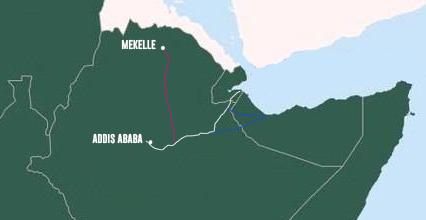
White line: Ethio-Djibouti Railway. Pink line: Railway towards Mekelle under construction. Blue line: Possible extension towards Berbera, Somaliland (two options are circulated in the media). Graphic by Istvan Tarrosy and Zoltan Voros.
Although the AADR was planned for and is capable of trains traveling at 120km/h, the speed in reality is closer to 45-55km/h. The slower speed is due mainly to two reasons: the power grid network, which is not yet fully reliable, and certain security issues. For instance, local farmers cause many problems and delays: They continue to drive their livestock onto the tracks and then claim compensation from the railway company for any animals the railcars hit. We first heard about this kind of activity in 2019, but it is still present in the life of the railway today.
There have also been attacks by different ethnic groups, along with thefts and vandalism, but cooperation between the different actors will hopefully put an end to these uncertainties. Concerning the stolen or vandalized spare parts, the EDR has made a new deal with the Chinese, who will provide a supply of necessary replacements.
Under current conditions, traveling from Addis to Djibouti takes two days, with a night stop at Dire Dawa – although there are plans to reintroduce direct connection and maybe even an express train, as well.
As for the still alarming debt issue, the Ethiopian government asked for a loan of $2.4-$3 billion from China’s EXIM Bank for this project, but altogether $14 billion – half of Ethiopia’s $28 billion in foreign debt – is owed to China for different projects. Addis Ababa renegotiated all the debt payments in 2019, extending the repayment period from 10 to 30 years just to suspend repayments of Chinese loans for 2023-2024 (until the summer of 2024). That deal reflected a tense economic situation, and took into account that the possible arrival of IMF funds and further debt extensions and payments suspensions are around the corner.
In addition to fulfilling its mission to connect the land-locked country to global maritime trade routes along the Gulf of Aden, the Red Sea, and the Suez Canal, to make the rail profitable, first and foremost freight transportation has to be further improved. Among other factors, this will require local expertise and human resources development.
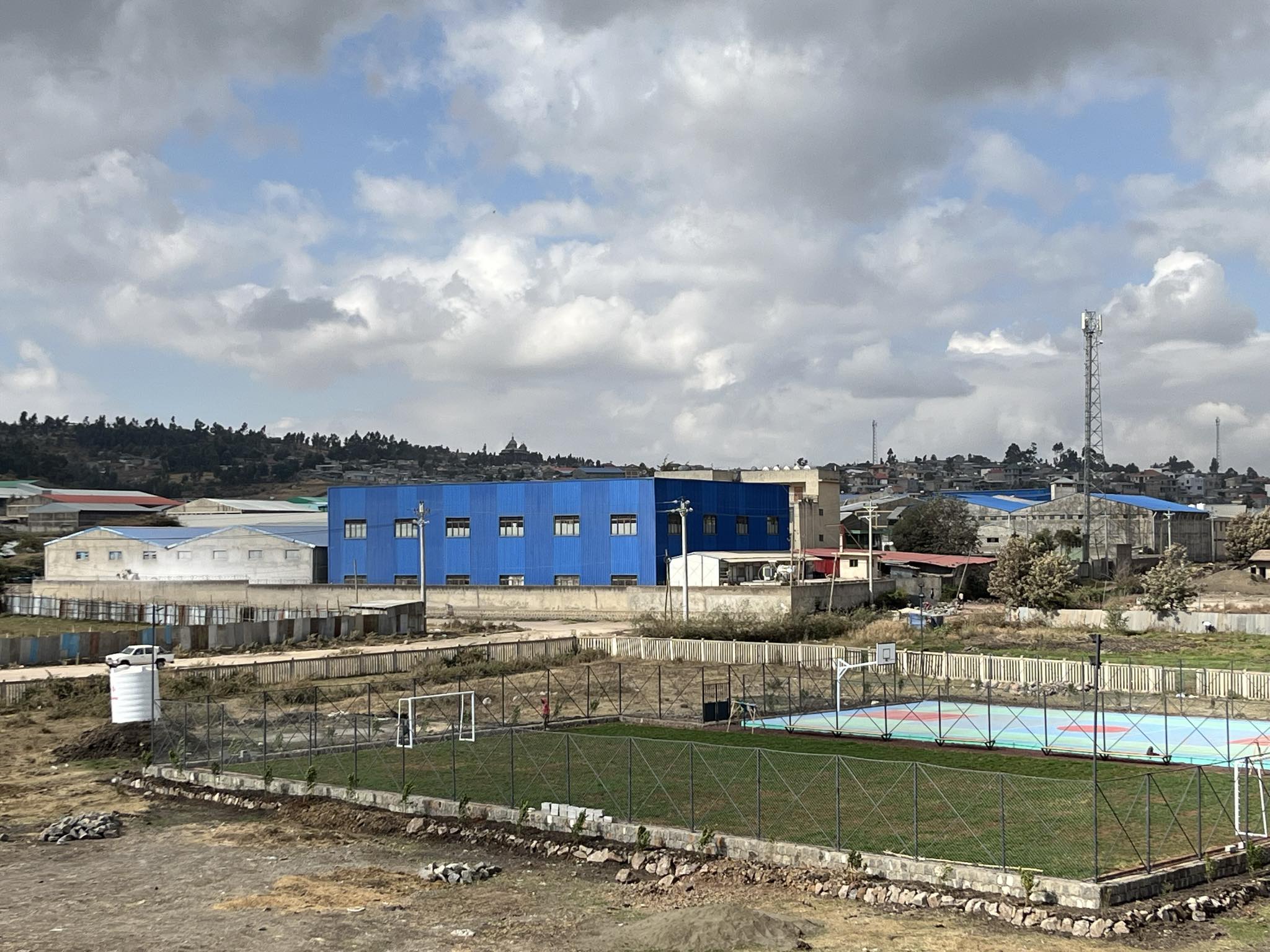
A soccer field and basketball court installed by the CEO of EDR, for use by both employees and the community near Furi-Lebu central station. Photo by Istvan Tarrosy.
In a 2020 article by Addisfortune, Abebe Dinku, a lecturer and civil engineering expert at Addis Ababa University, recommended that “the management of the company invest in human resources, technologies, and machines such as loading and unloading equipment to deliver efficient service.” It seems that the EDR has been taking this turn, as CEO Zenebe explained.
With its 3,000 employees the company has been progressing at an accelerated pace in cargo transportation, with an annual average growth rate of 22 percent. The total volume of cargo along the line surpassed 2 million tons in 2023 – although it should be pointed out that the original plans were for a volume of over 20 million tons, probably in excess of actual capacity. There has been a steady growth of the total transport revenue since 2020, 95 percent of which is connected to cargo.
In terms of the composition of freight, Zenebe underscored that the company prioritizes the transport of national products of both countries. Therefore, the AADR carries fertilizers, coffee, and edible oil in a growing volume, coupled with further diversification efforts emphasizing vehicles and steel, as shown in the EDR’s public Six Years Summary Report (2018-2023), provided by the company. A former M.A. student of ours working in Addis Ababa confirmed the importance of this service, as he was happy to receive his new car from the United Arab Emirates via the rail line transported by EDR.
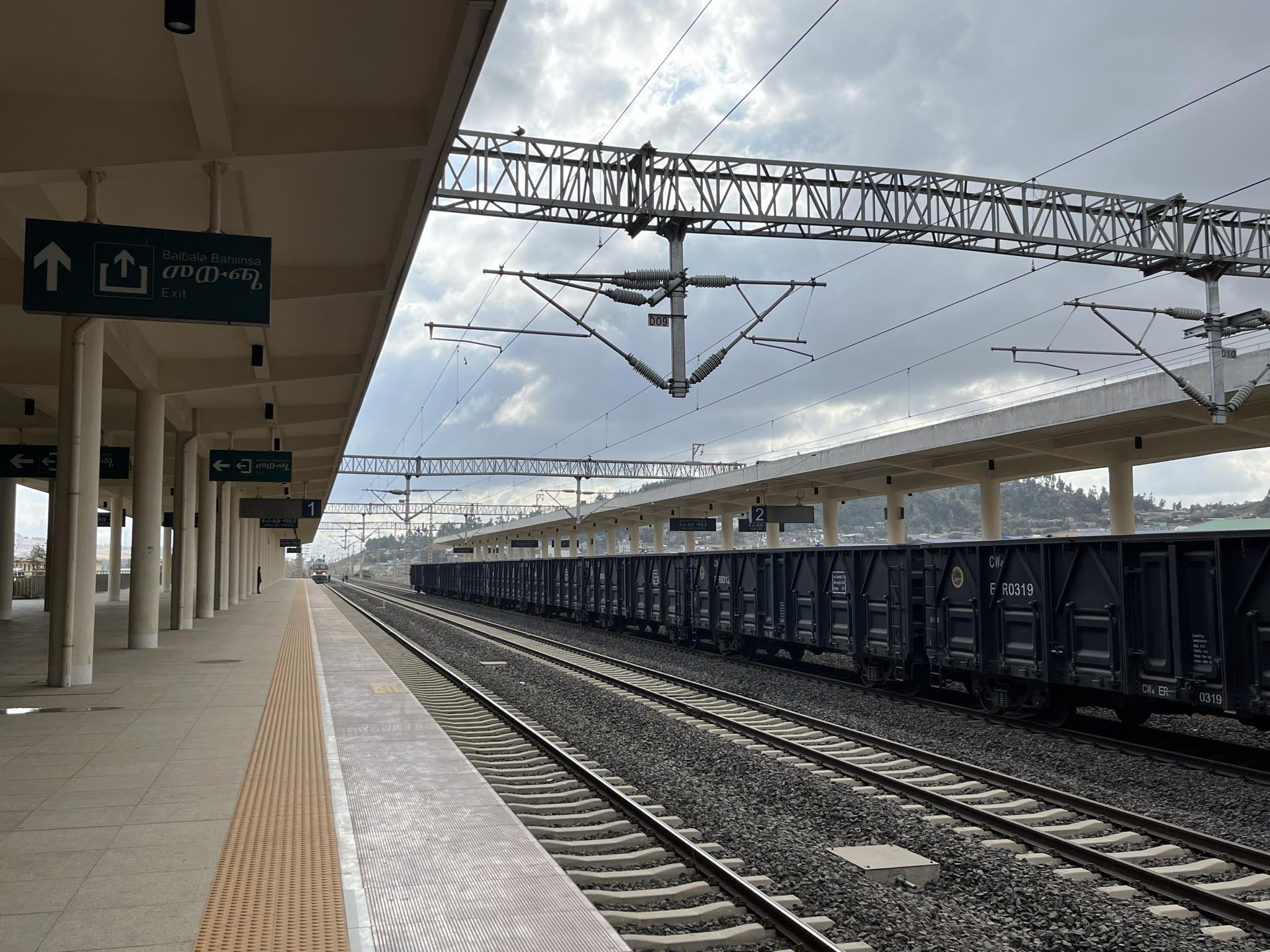
Freight wagons on the AADR. Photo by Istvan Tarrosy.
The EDR owns 35 electric locomotives, six diesel shunting locomotives, 30 passenger coaches, and 1,100 freight wagons. To be able to boost regional integration in a tangible manner, the AADR further needs to reach out to populations at large and make them first aware of opportunities the connection may hold in-country and also cross-country.
Second, the railway should offer locals reasonable deals so that they use the train in larger numbers and more frequently. Services needs to be improved, not only with respect to the 1,000-plus business partners – which on its own has been a substantial achievement of the last couple of years – but also in terms of serving local citizens to become passengers of the railway. The CEO agreed with us that this is one of the major tasks for the years to come.













